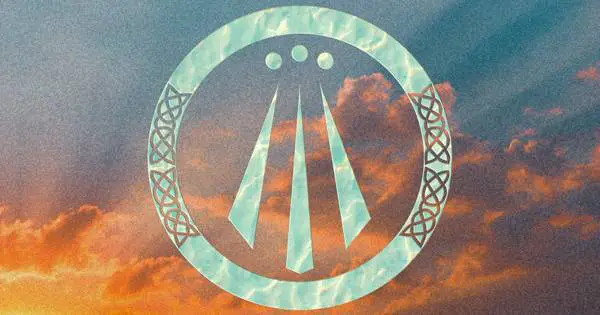This symbol is a neo-Druid symbol whose invention is attributed to an 18th century Welsh poet named Iolo Morganngw.
The word Awen, meaning inspiration or essence in the Celtic language, is much older and was first recorded in the 9th century book ‘Historia Brittonum’ thought to be written by the Welsh monk Nennius, although there is some disagreement surrounding the book’s authorship.
Nennius alphabet
Nennius is famed for his contribution to the development of Arthurian legend. He is also said to have created an alphabet, not dissimilar to the Ogham or Runes, after a Saxon scholar ridiculed the Britons for not having their own method of writing. One of the Nennian letters looks very similar to this Awen symbol and could possibly be the inspiration for it.
The Awen symbol also appears in Charlotte Guest’s Mabinogion, a translation of old Welsh tales and folklore relating to Arthur.
Balance between male and female energy
The three rays are said to represent the harmony of opposites in the universe. For example, the two outer rays representing male and female energy and the central ray the balance between them. It also represents the three domains of earth, sky and sea; mind, body and spirit.
On the whole, Awen is considered a symbol of inspiration and divine illumination for poets, writers, artists and creatives. Many contemporary Druid groups have translated its meaning to “flowing spirit” and it is a popular symbol for tattoos, jewellery and neo-pagan art work.
The wonderfully ornate illustrations and calligraphy in the Book of Kells has inspired artists for centuries and is still highly influential today. It’s now possible to have your name written in the style of the Book of Kells with ornate initial letters and calligraphy that are direct replicas of work created by the monks more than a thousand years ago.
